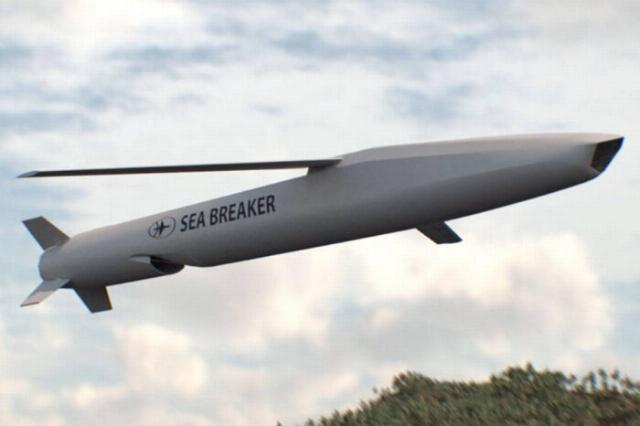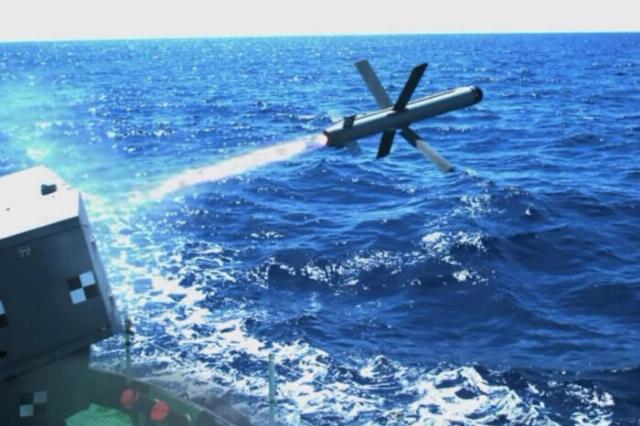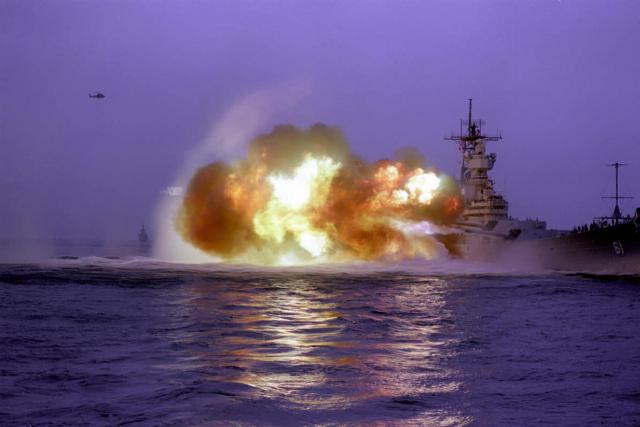Both industry and the Navy of foreign countries are working on innovative solutions capable of providing affordable fire support capabilities from the sea, in addition to reconnaissance of coastal and more remote land targets. ( Part I and part II )
In particular, the Israeli company Rafael Advanced Defense Systems recently announced the testing of SEA BREAKER , "a 5th generation marine and land-based weapon system capable of reaching a range of up to 300 km for precision strike with pinpoint damage to a wide range of valuable marine and land targets," according to the company. With a 4-meter hull with folding wings and a turbojet engine weighing less than 400 kg without an accelerator, the new munition is launched by several containers that can be mounted on high-speed missile boats with a displacement of 100 tons.

Raphael Sea Breaker Cruise Missile
According to the manufacturer, SEA BREAKER is equipped with an advanced homing head (HOMING) with infrared image recognition (IIR) with automatic target capture (ATA) and automatic target recognition (ATR), which, thanks to artificial intelligence, allows deep learning and scene matching based on big data, providing a fully autonomous mission and interaction with the target. The rocket is equipped with a data link that supports real-time decision-making and tactical updates, as well as an advanced flight planning and management system.
For financial reasons, the U.S. Department of the Navy, in addition to the artillery guided projectile (GLGP), also stopped work on the electromagnetic rail gun (EMRG), ending research activities begun in 2005 to provide fire support to troops ashore from the sea.
In Europe, in April 2020, the European Defense Agency (EDA) assigned a leading role to the Franco-German Research Institute of Saint Louis (Franco-AllemanddeRecherchesdeSaintLouis) in the 24-month project "Extended-range projectile using an electromagnetic railgun" (ProjectileforIncreasedLong-rangeEffectsUsingElectromagneticRailgun, PILUM). The latter is a feasibility study for the use of an electromagnetic railgun (EMRG) as a long-range artillery system. The project will further explore the possibility of integrating EMRG into onshore and offshore platforms.

NAVAL SPIKE
Missile weapon systems based on ground-based applications such as Rafael's NAVAL SPIKE (Non-Line-of-Sight, NLOS) with a range of 32 km are already being operated by the Navy worldwide. However, the widespread use of barrage strike weapons systems during the Nagorno-Karabakh conflict in 2020 between Azerbaijan and Armenia significantly influenced the future plans of not only the ground forces, but also naval and amphibious forces around the world.
In January 2020, the US Marine Corps System Command signed a contract with the American company Mistral for the design, development, manufacture and testing of the OPF-M precision-guided munitions system (OrganicPrecisionFiresMounted / Organic precision fire – mounted) and its integration into the ground-based tactical vehicles LAV-M and JLTV and the future LRUSV (uninhabited long-range surface vehicle).
An American company has teamed up with the Israeli company uVision to supply the US Marine Corps with an impact barrage munition (BB) based on the uVision HERO 120 . The product has a mass of 12.5 kg and is launched from a container, carries a warhead weighing 4.5 kg and has a 60-minute flight duration for reconnaissance. BB allows you to conduct high-precision fire from closed positions. The company also offers the HERO-400EC for naval applications weighing 40 kg, with a 10-kilogram warhead, a flight range of 150 km and a flight duration of 120 minutes.
Based on the materials of the journalEuropeanSecurity & Defense


